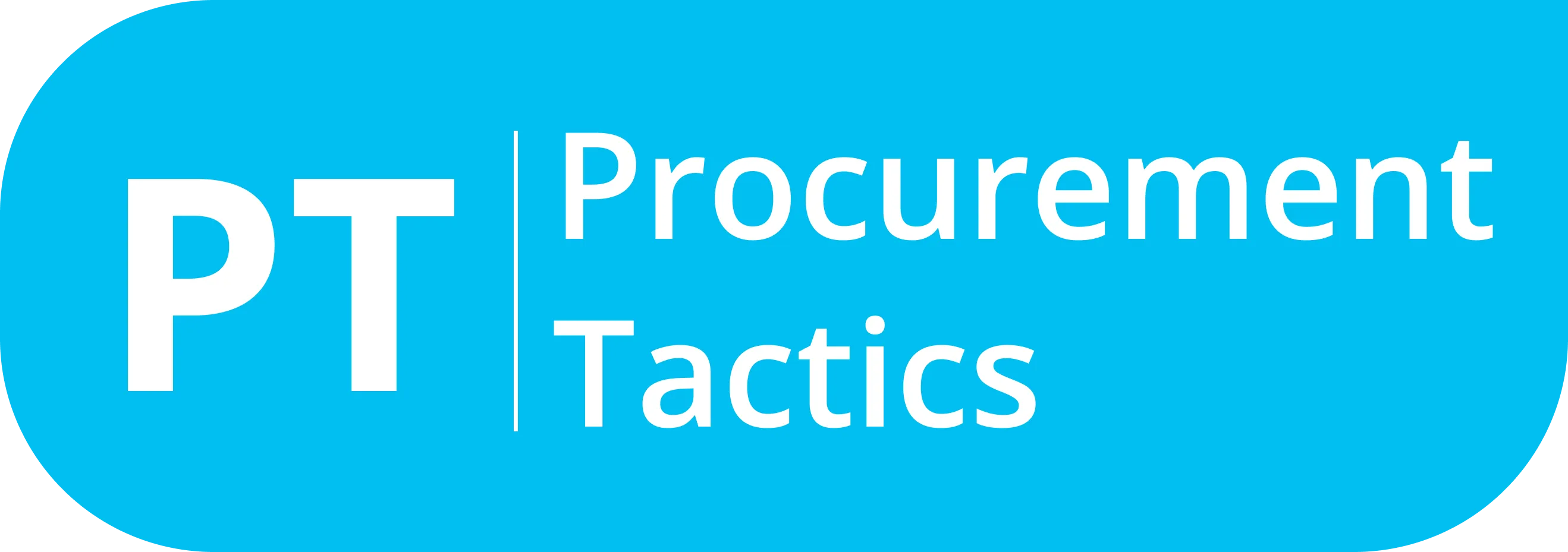Written by Marijn Overvest | Reviewed by Sjoerd Goedhart | Fact Checked by Ruud Emonds | Our editorial policy
Salary Negotiation Statistics 2025 — 60 key Figures

As taught in the Negotiation Course for Procurement Professionals / ★★★★★ 4.9 rating
What is salary negotiation?
-
Salary negotiation is the process of discussing and agreeing on fair pay and benefits with an employer.
-
Salary negotiation helps employees maximize earnings and secure better overall compensation.
-
Employers often expect and value negotiation as a sign of confidence and professionalism.
Salary negotiation can be daunting as sometimes you feel that you are not in a position to negotiate your salary. However, many recruiters today have positive remarks about potential employees who do this.
In this article, we will show you the latest figures in salary negotiation. Additionally, we will check the factors that may affect your chances of being hired for a job. Thus, affecting your salary and how you can negotiate it too.
Once you are done reading this article, you will know the latest statistics on negotiating salary. Thus, allowing you to have in-depth knowledge of the number of people who use this. Additionally, it will enable you to position yourself better when negotiating your salary.
Salary Negotiation Statistical Figures in 2025 That You Should Know
The following are the salary negotiation statistics for 2025:
1. 67% of Procurement Professionals Successfully Negotiated Their Salary
Salary negotiation is becoming more common as professionals feel confident discussing pay, and employers see it as a sign of strength rather than greed.
This trend indicates that procurement professionals are becoming increasingly aware of their market value and are willing to advocate for fair compensation.
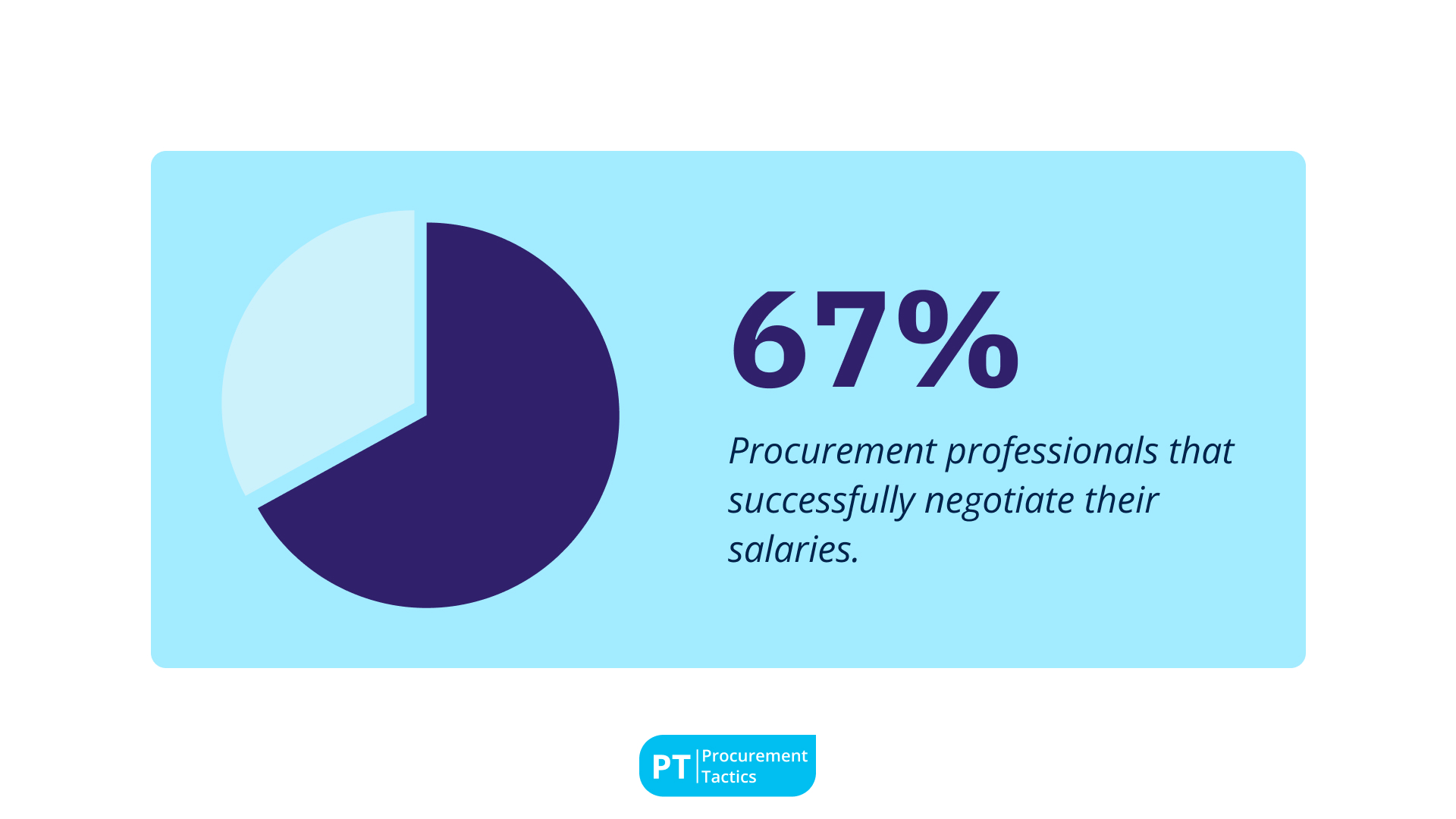
2. 73% Of Employers Anticipate Salary Negotiation From Job Applicants
Most employers anticipate candidates will negotiate pay, yet over half of job seekers still accept the first offer despite salary being their top priority. Being prepared to negotiate can help candidates maximize their earning potential from the very start.
3. Some Employers Only Publish Ranges Between 25 and 75% Of What They Pay For A Given Position
Some companies publish pay ranges covering just 25–75 % of actual salaries, meaning listed ranges may not reflect the full earning potential for a role.
This highlights the importance of researching industry benchmarks and confidently negotiating based on true market rates.
4. Recruiters Report 75% Increase in Candidates Initiating Salary Negotiations
Recruiters report a sharp increase in candidates initiating salary talks, driven by strong job markets and better access to pay data.
Employers view this proactive approach positively, seeing it as a sign of confidence and professionalism
5. The Standard Annual Salary Increase for Employees Averages 3%
Employees typically receive a 3 % yearly raise, though increases vary by industry and age group, with younger workers often seeing higher jumps.
Knowing average raise expectations can help employees plan their long‑term career growth and financial goals.
6. Myth Busted: Women (60%) Negotiate Almost as Much as Men (68%)
While 68 % of men negotiate their salaries, 60 % of women do the same, debunking the myth that women rarely negotiate.
Despite this small gap, stereotypes persist, and women may still face different outcomes when negotiating, highlighting ongoing challenges in achieving pay equality.
7. Approximately 66% of U.S. Employees Who Tried to Negotiate Initial Salaries Report Success
Around two‑thirds of U.S. employees who negotiate their initial salaries get the pay they ask for.
Despite this high success rate, many people still avoid negotiations, often due to discomfort or a lack of confidence, which can result in missing out on higher earnings.
8. Negotiators Average an 18.83 % Pay Raise — 76 % Men vs 24 % Women
Employees who ask for more typically gain between 5 % and a full doubling of their salary, landing at an 18.8 % average raise.
Because substantially more men than women took part in bargaining, the overall pool of negotiators skews male, even though the rate of negotiation within each gender is similar (see statistic 6). This disparity underlines the need to close gender gaps in both opportunity and outcomes.
When direct raises aren’t feasible, candidates can still negotiate valuable extras such as enhanced health coverage, transport allowances, or extra paid leave.
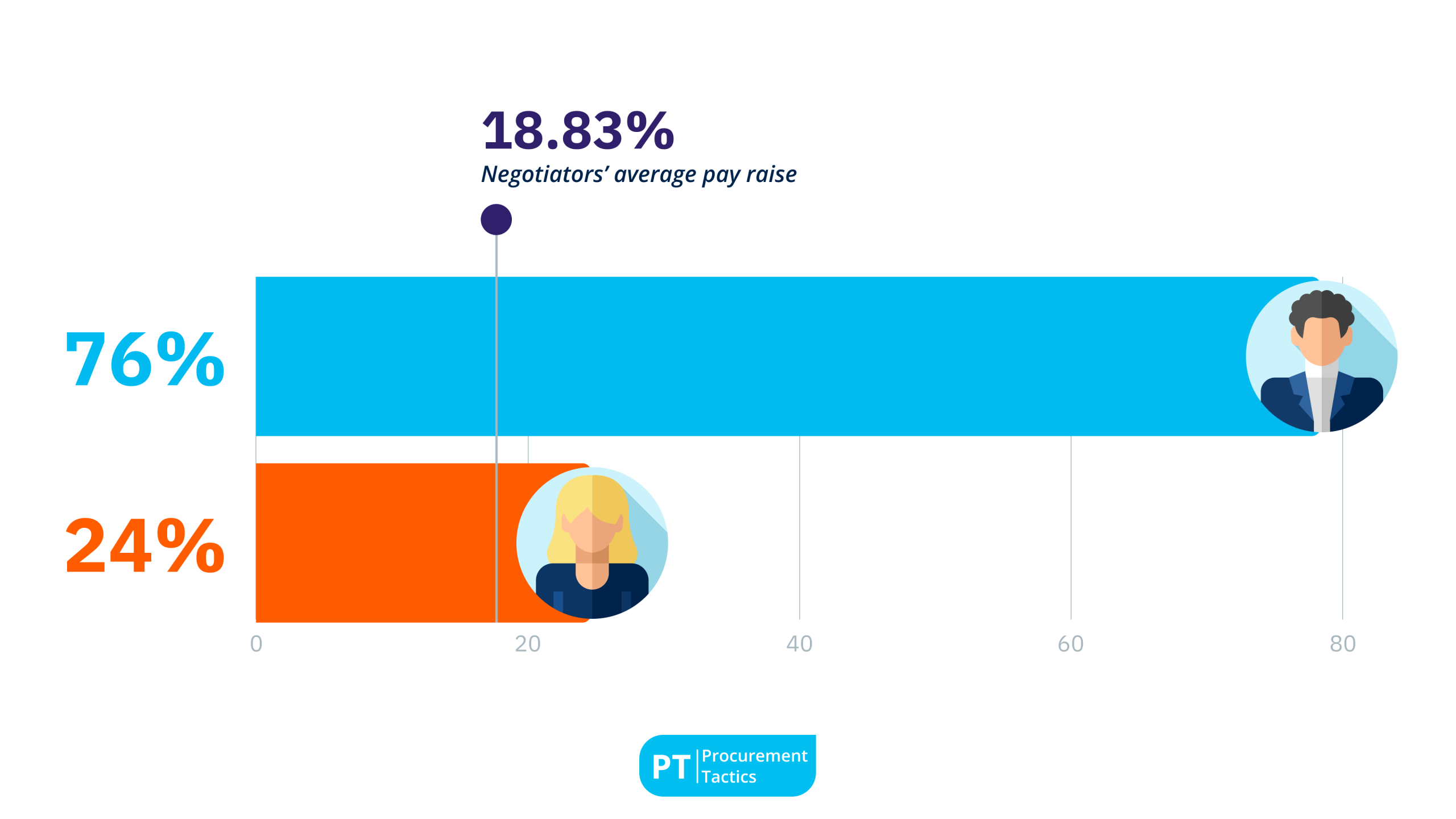
9. Only 10 % of the Respondents Gained Less Than 10 % or None in Their Salary
Just 10 % of employees gain less than a 10 % raise or no increase at all when negotiating, often due to company budget limits.
Despite this, salary negotiation remains worthwhile, as most candidates achieve better pay outcomes.
10. Negotiation Raise Gap: Men + 19.7 %, Women + 15 %
While women negotiate nearly as often as men, their average raise is 15 % compared to men’s 19.7 %, revealing a persistent gender pay gap.
This highlights the need to address biases in negotiation outcomes and develop strategies to ensure fairer pay practices.
11. Young Professionals Step Up: 60 % of Under‑30s Negotiate Salaries, Just Behind 66 % of Over‑40s
Around 60 % of employees under 30 negotiate their salaries, close to the 66 % of those over 40, showing that younger professionals are increasingly confident in discussing their pay.
12. Europe Leads Salary Negotiation (70 %), Africa Trails (36 %)
Salary negotiation is most common in Europe, where 70% of people negotiate, compared to just 36% in Africa.
This difference reflects economic stability and cultural norms, as stronger job markets in developed regions empower employees to negotiate with confidence.
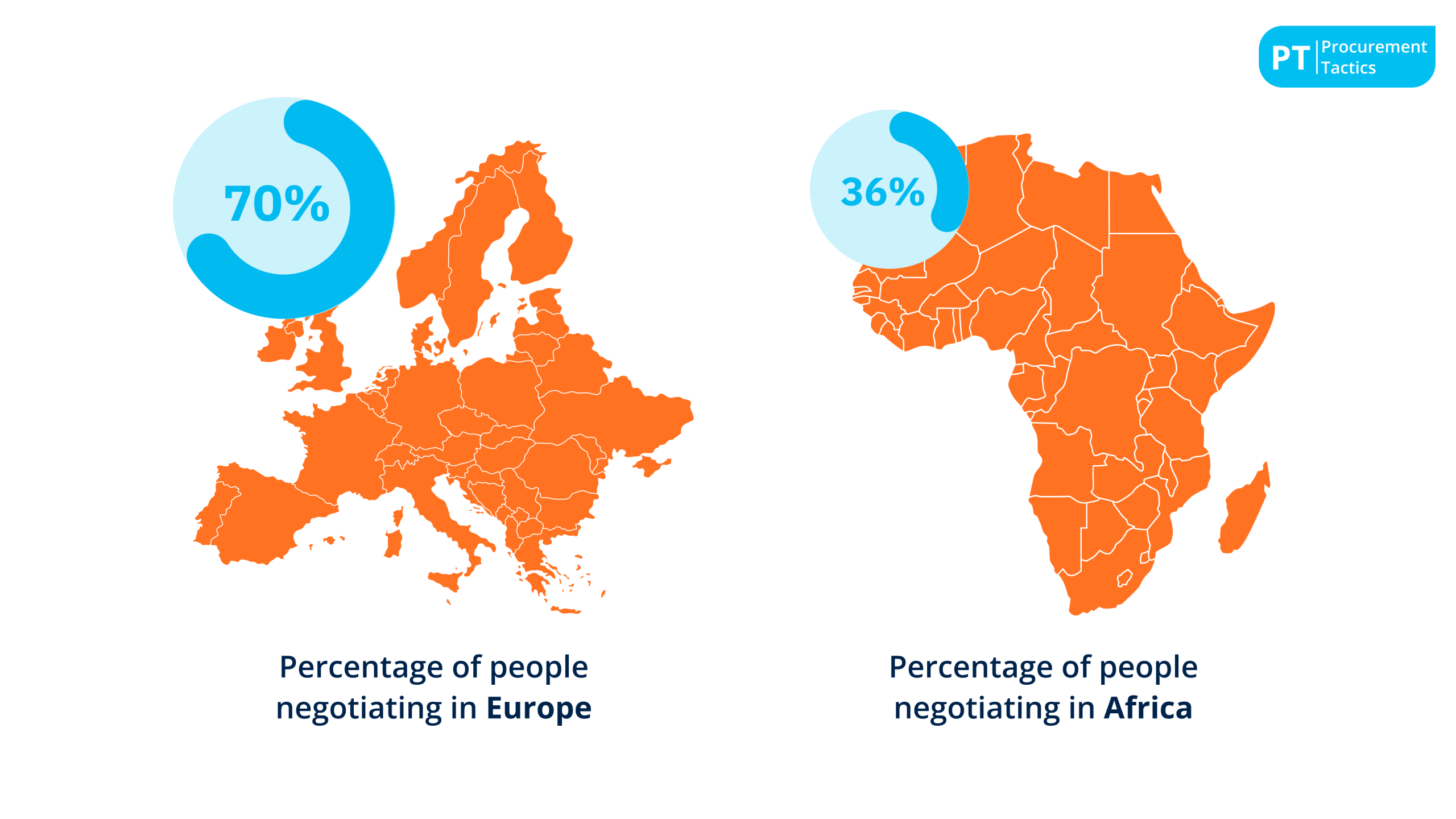
13. Poor Labour Market Conditions are the Biggest Reason People Skip Negotiating
Most prevalent in African countries but echoed in the Americas, Europe, and the Middle East, weak job security discourages pay talks. The trend shows how macroeconomic factors heavily influence individual bargaining behavior.
This trend is most evident in Africa but also affects employees in North America, Central America, Europe, and the Middle East, making many hesitant to ask for higher pay.
14.31.11 % Cite Company Policies as the Reason They Didn’t Negotiate
Among those who didn’t negotiate salaries, 31 % said company policies prevented them.
Many organizations set strict salary ranges to ensure consistency, while some, like government agencies, have fixed pay scales with no room for negotiation.
15. Confidence Remains a Challenge: 15 % Avoid Negotiations Due to Self‑Doubt
Confidence is a major barrier to salary negotiations, with 15 % of respondents holding back due to self‑doubt.
This issue affects younger employees most but is also common among older workers, especially those over 50 re‑entering the workforce.
16. Initial Offer Accepted by Only 8.7 % of Candidates
Just 8.7 % of respondents felt the initial salary offer was fair enough not to negotiate. This group includes both entry-level candidates lacking negotiation experience and senior professionals who received competitive offers upfront.
17. Only 5 % Didn’t Negotiate Because It Was Their First Job
Lack of awareness or leverage keeps many new graduates from asking for more. Younger generations are, however, becoming more confident in requesting fair pay.
18. 10 % Plan to Negotiate Salary in Their Next Job Opportunity
One in ten respondents plans to negotiate pay in their next role, driven by rising living costs and growing salary transparency.
For example, recent EU rules require large companies to disclose pay ranges, empowering workers in negotiations.
19. 45 % of U.S. Workers Negotiate Their Salary
About 45 % of American workers negotiate salary, while 55 % do not; younger generations, such as Gen Z and millennials, are more active in negotiations.
20. 78 % of New Hires Got a Better Offer After Negotiation
Seventy‑eight percent of new employees who negotiated received a better offer, confirming the effectiveness of negotiation in boosting initial salary.
21. 55 % of Gen Z vs 48 % of Millennials Negotiate
Gen Z (55%) is more negotiated compared to millennials (48%), while Gen X and Baby Boomers stand at 42%.
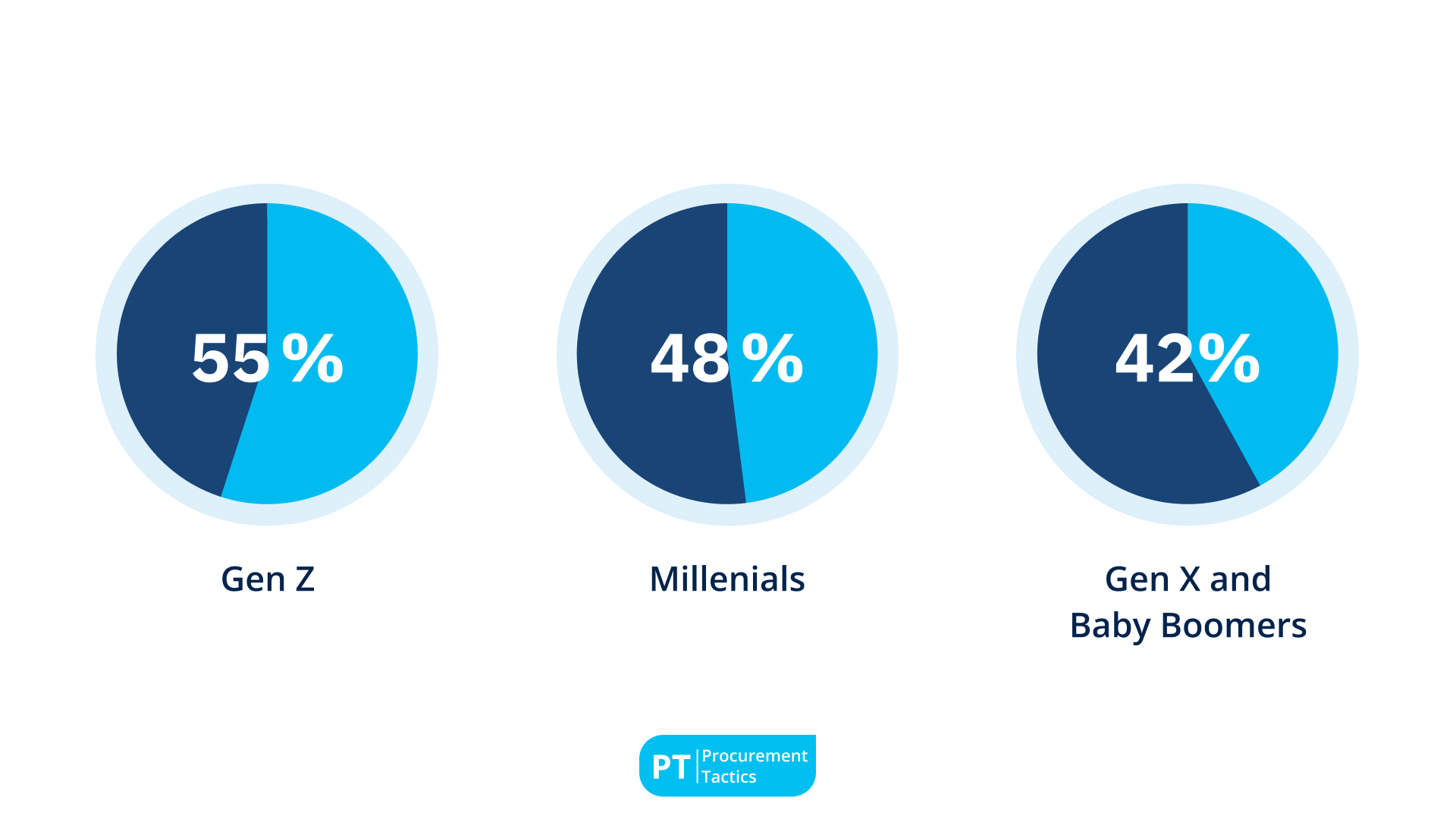
22. 54 % of Professionals With Low Job Satisfaction Ask for Raises
54% of workers with low satisfaction at work seek a raise, while it makes 41% satisfied.
Bad work experience often motivates performance in negotiations.
23. 70 % of Hiring Managers Anticipate Pay Negotiations
Seven in ten hiring managers assume candidates will try to negotiate salary or overall compensation, and 85 % of those who do negotiate succeed in improving the offer, showing that bargaining has become a routine step in the hiring process.
24. 31% of New Hires Negotiated Their Last Offer
31% of recent employees negotiate salary, which is a decline from 49% of the previous year.
Fatigue from the process and fear of loss of supply reduce negotiating activity.
25. 85% of Americans Who Negotiated Received Some Request
85% of Americans who negotiate receive at least part of the required salary.
Negotiation almost always brings a certain benefit, even if it is not full of substance.

26. Only 42 % of professionals aged 18–34 negotiate their job offers.
Early-career talent is no longer shy about asking for more, matching the “negotiation-is-expected” culture recruiters report.
Gen Z and younger millennials increasingly research the market, pay online, and arrive armed with data to justify higher compensation. Employers who stick to a fixed offer risk losing top prospects.
27. 53 % of Employers Will Negotiate Entry-Level Salaries
More than half of hiring managers say yes to haggling even for first-rung roles; candidates leave money on the table if they assume “take it or leave it.”
Concessions usually appear as a higher starting salary or an accelerated six-month review for the first raise. Clear performance benchmarks help both sides reach an agreement faster.
28. Only 23 % of U.S. HR Teams Still Share Full Pay Ranges
Pay-transparency momentum has stalled stateside, making it harder for applicants to benchmark offers.
This information gap pushes candidates toward external market data and anonymous sites like Glassdoor, while new regulations in states such as Colorado and New York are slowly forcing greater disclosure.
29. 59 % of European HR Teams Remain Transparent
European employers are more than twice as likely as U.S. peers to keep salary ranges public.
Greater transparency boosts trust and shortens time-to-hire because applicants immediately know the financial frame. It also narrows gender and ethnicity pay gaps, an ESG metric that is gaining weight with investors.
30. 41 % of Candidates Abandon Ads That Hide Pay
Four in ten professionals simply stop applying if the posting skips a salary range, an instant talent pool loss.
Pay-transparency laws have trained applicants to expect at least a broadband; skipping it signals a “black-box” culture and increases drop-off rates at the very top of the funnel.
31. 58 % of Gen Z Refuse to Apply Without a Disclosed Salary
The transparency bar is even higher for the newest generation at work; secrecy costs you, Gen Z applicants.
Because they grew up with crowd-sourced data and open conversations about pay equity, Gen Z interprets missing salary info as a red flag and will quickly scroll past the listing.
32. 46 % of Candidates Still Accept the First Offer, With No Negotiation
Nearly half of job-seekers leave potential cash on the table, often from fear that the offer could be pulled (it rarely is).
The same study shows that 94 % of negotiated offers remain intact, proving that hesitation is largely based on misperception, not reality.
33. 32.8 % of Employees Tried to Negotiate a Raise Last Year
Roughly one-third of workers returned to the table for more money in 2024, a sign that the pay-conversation culture is spreading but still not universal.
Those who did negotiate cited “market adjustment” and “promotion” as the top reasons, underscoring a growing expectation that compensation should keep pace with role evolution.
34. 63 % of Workers Would Reject an Offer With “Unacceptable” Pay
Salary misalignment is now the single biggest deal-breaker at the offer stage, forcing firms to keep compensation competitive or lose talent instantly.
For candidates, it underlines the value of researching market rates and pushing for transparency before progressing to interviews.
35. 38 % of Australian Employees Want Same-Day Access to Earnings
Demand for earned-wage access is rapidly moving from perk to expectation, especially among households feeling the pinch of higher living costs.
Employers able to release pay on demand gain a clear edge in negotiations and retention.
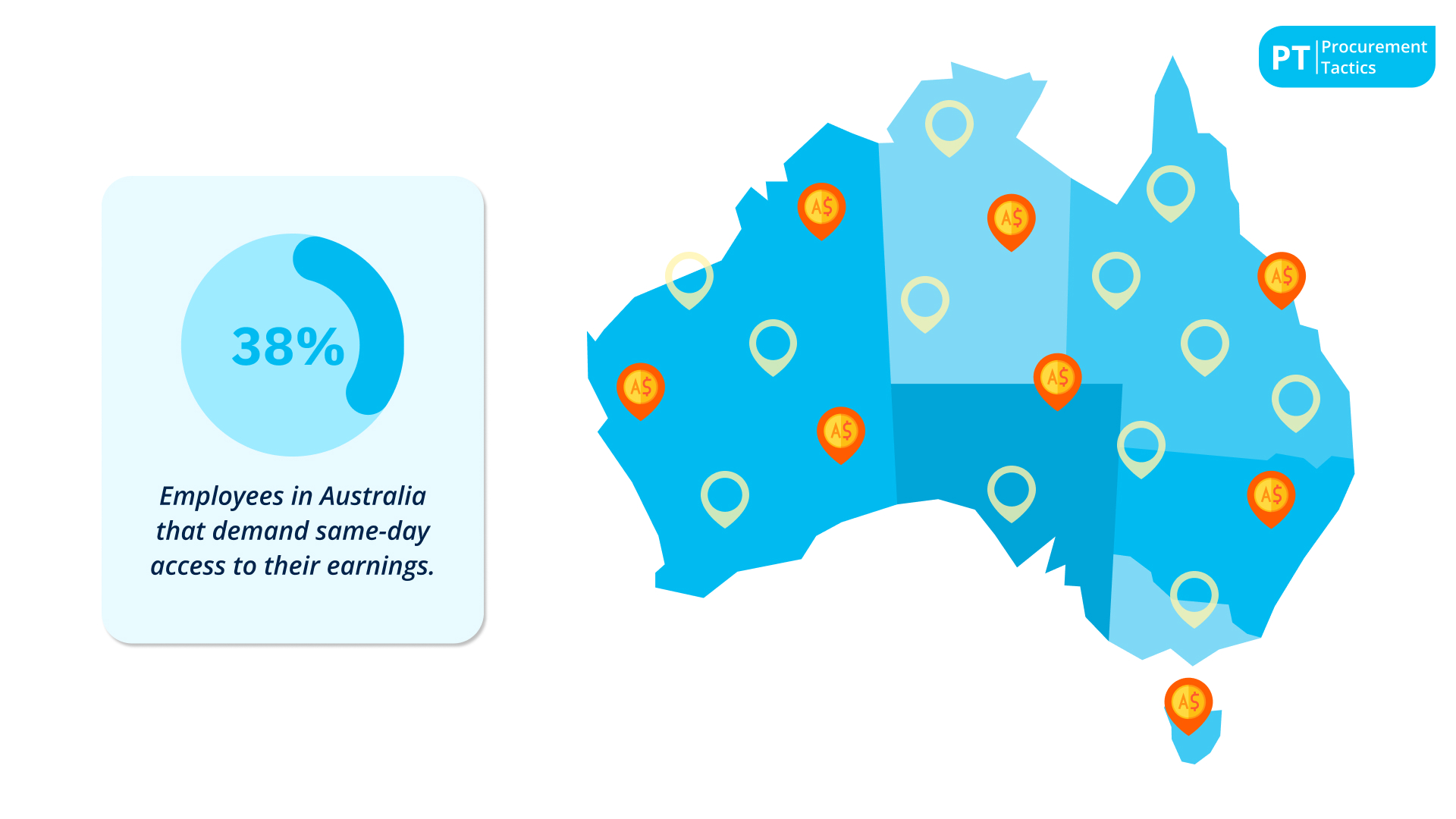
36. 49 % of U.S. Workers Would Trade Vacation Time for Higher Pay
Nearly half of working Americans say they would accept a job with no vacation days if the salary were high enough, showing that cash liquidity can outweigh paid leave for many employees.
For employers, this highlights the value of offering PTO-for-pay “buy-back” options or flexible rewards that let staff rebalance time off and income to fit personal priorities.
37. 3.4 % Average Salary Budget Increase Planned by Canadian Firms in 2025
Canadian companies plan an average salary-budget increase of 3.4 % in 2025, gradually returning to pre-pandemic levels as inflation subsides and the labour market stabilises.
The same Normandin Beaudry survey notes that total budgets, including ad-hoc adjustments for scarce talent, reach roughly 3.7 %, with only 3 % of employers considering a pay freeze.
38. 3.4 % Median Pay Award in the U.K. (Q1 2025)
Latest IDR data show typical private-sector settlements nudging above the long-run norm, partly to keep pace with April’s National Living Wage jump.
This figure now serves as a realistic midpoint for 2025 salary review talks.
39. 19 % of U.K. Private-Sector Employers Granted More Than 6 % Raises
Almost one in five firms went well beyond the median, with services and logistics leading the charge, evidence that pockets of the market remain fiercely competitive.
High performers in hot skill areas can use this stat as leverage for out-of-band increases.
40. 17 % of Job-Switchers Saw Their Pay Drop After Moving in 2025
17 % of job-switchers have ended up with lower pay after moving to a new employer.
The finding confirms that company-hopping no longer guarantees a raise, making careful research on sector wages and cost-of-living shifts essential before leaping.
41. 70 % of Employers Now Bundle Voluntary Benefits into Offers
From wellness stipends to pet insurance, personalized add-ons have become mainstream, with seven in ten organizations using them as deal sweeteners.
Negotiators should weigh the dollar value of these extras when benchmarking total compensation.
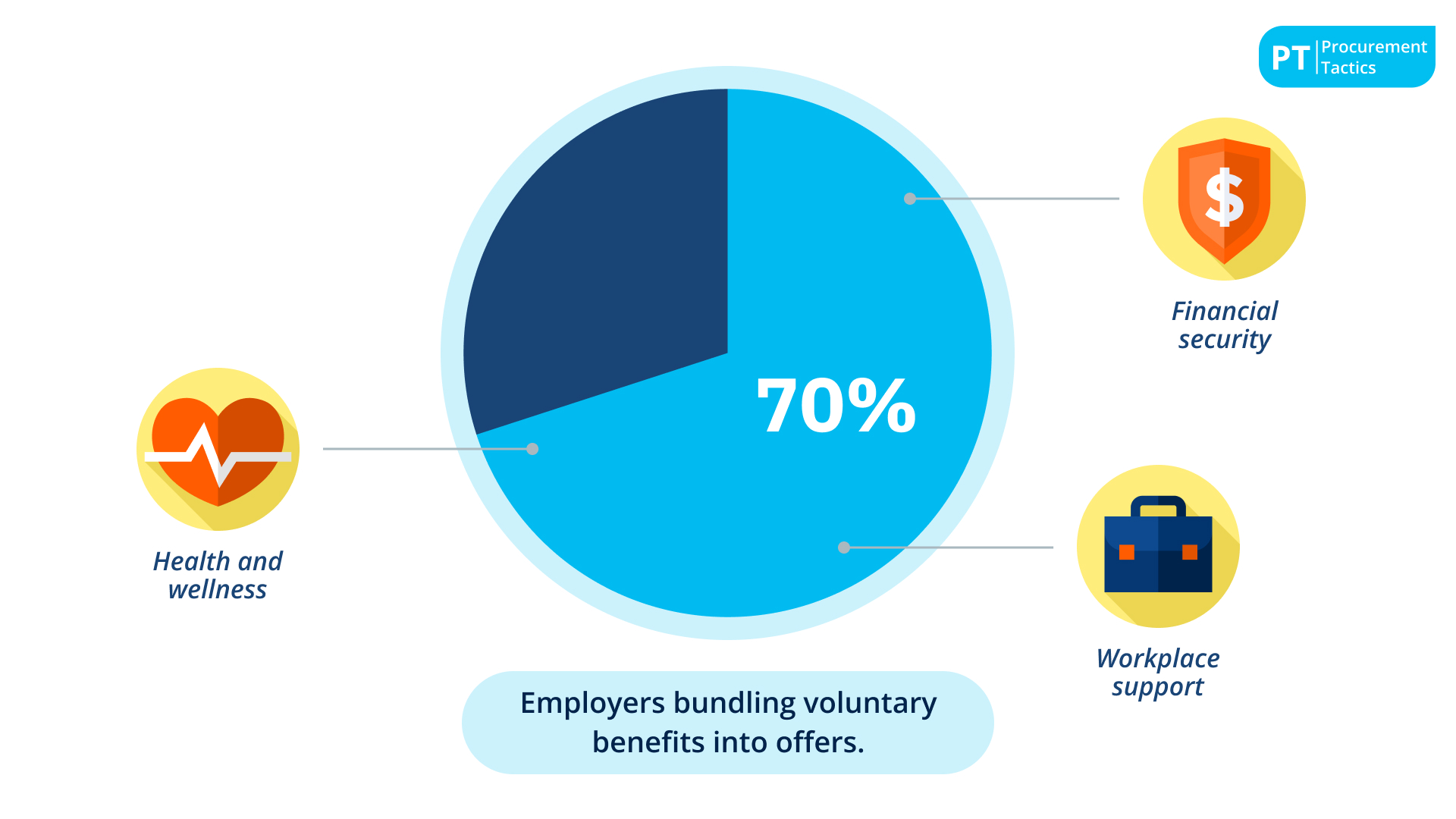
42. 4.1 % Typical U.S. Pay Raise Forecast for 2025
Consultancy WTW predicts base-salary growth will cool slightly from 4.5 % in 2024, setting a realistic negotiation anchor for the year ahead.
Employees can still aim higher; top performers typically land 1–2 points above the average.
43. 55 % of Workers Aged 35+ Negotiate Their First Offer
Mature candidates are the most likely age group to push back on initial pay, suggesting that experience breeds confidence at the bargaining table.
Employers should anticipate counter-offers from mid-career talent and budget accordingly.
44. Only 3.7 % of U.S. Job Ads Offer a Sign-On Bonus
Signing incentives have cooled from their 2022 peak, yet remain nearly double pre-pandemic norms. Bonuses are now a targeted, hard-to-miss signal that a role is difficult to fill.
45. 78.87 % of Employees Who Accept Counteroffers Quit Within 18 Months
Most counter-offers merely delay, rather than prevent, turnover.
Employers should weigh the short-term retention bump against long-term churn costs before bidding to keep a resigning employee.
46. 70 % of Organizations Are Taking Action on Pay Equity
Pay-equity remediation is now mainstream: seven in ten firms plan compensation adjustments to close gaps in 2025.
Job seekers can leverage this momentum when pressing for fair pay.
47. 38 % of Organizations Still Haven’t Run a Pay-Equity Analysis
Despite pay equity rising on HR priority lists, 38 % of employers still haven’t carried out a pay-equity audit.
Skipping this analysis leaves them exposed to mounting legal, financial, and reputational risks as regulators and investors intensify scrutiny of fair pay and transparency.

48. 87 % of Employers Have Never Rescinded an Offer Because a Candidate Negotiated
Nearly nine in ten hiring managers keep the offer on the table even after tough bargaining, proving that the “they’ll pull the offer” fear is largely unfounded.
Negotiating not only secures better pay but also signals business savvy, traits most employers appreciate.
49. 57.8 % of U.S. Job Postings Now List Pay Information
Thanks to state transparency laws and competitive pressure, more than half of ads on Indeed now disclose at least a salary range, up sharply year-over-year.
Public pay bands give applicants a solid anchor for negotiations and reduce back-and-forth on expectations.
50. 42 % of New Hires Received a Signing Bonus in Q2 2025
Signing incentives are back in, jumping from 20% in Q1 to 42% in Q2 2025. Employers are increasingly offering lump sum cash when basic salary budgets falter.
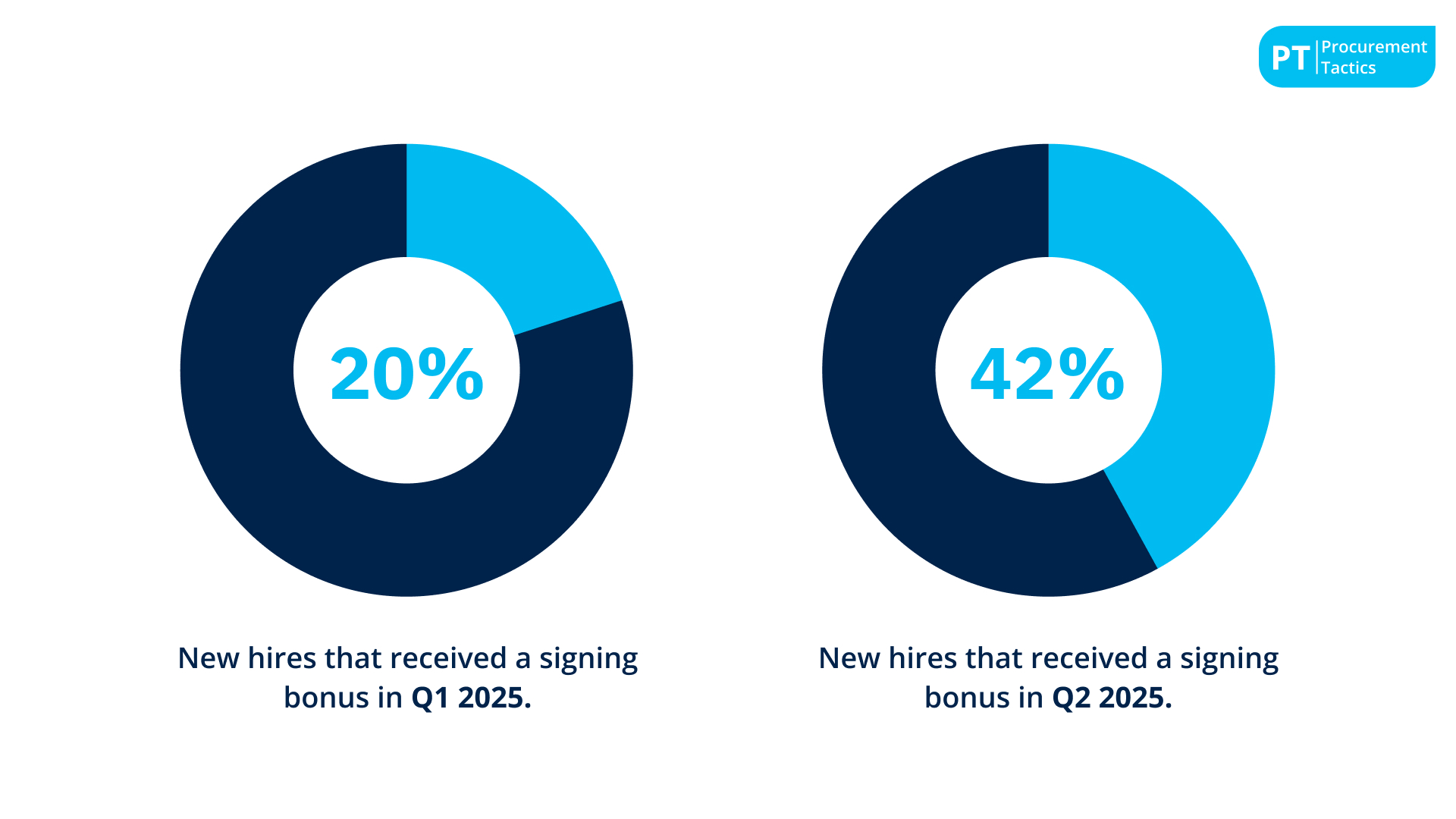
51. 66 % of Employees Expect to Pay Equity to Improve in the Next Two Years
Transparency reports show that two-thirds of workers believe the company will soon provide a fairer pay environment.
Regulatory pressure and ESG metrics strengthen their optimism.
52. 45 % of Companies Use Retention Bonuses
A 2025 survey reveals that nearly half of firms routinely give a “stay bonus” to retain key people. A tool once reserved for crises has become a standard containment tactic.
53. 6 – 7 % of Payroll Budgeted for Broad-Based Variable Pay
This year, companies are on average allocating 6-7% of the salary mass for general incentive bonuses (for management over 30%).
The focus is shifting from fixed pay to performance-related rewards.
54. 75 % of Professionals Prefer Negotiating Over Video Calls
A study on remote working (December 2024) says that three-quarters of respondents feel more relaxed discussing salary on Zoom than face-to-face.
The virtual environment relieves stress and equalizes the negotiating position.
55. 1.61 % of U.K. Job Ads Offer a Four-Day Week
Analysis from March 2025 shows that only 1.6% of ads offer a four-day work week, and the benefit is still rare despite the media hype.
Candidates often have to win it by individual agreement.
56. 23 % of Employers Include Sign-On Bonuses in 2025 Recruitment
A national survey reveals that nearly one in four employers offer a signing bonus, while 64% increase base salaries in parallel.
It is offered “below the grain” much more often than is publicly stated in the advertisements.
57. 10 % of Employees Will Be Promoted in 2025 – With an 8.5 % Raise
Research predicts that one in ten people will receive a promotion with an average increase of 8.5%.
Knowing this average helps employees set realistic goals in internal negotiations.
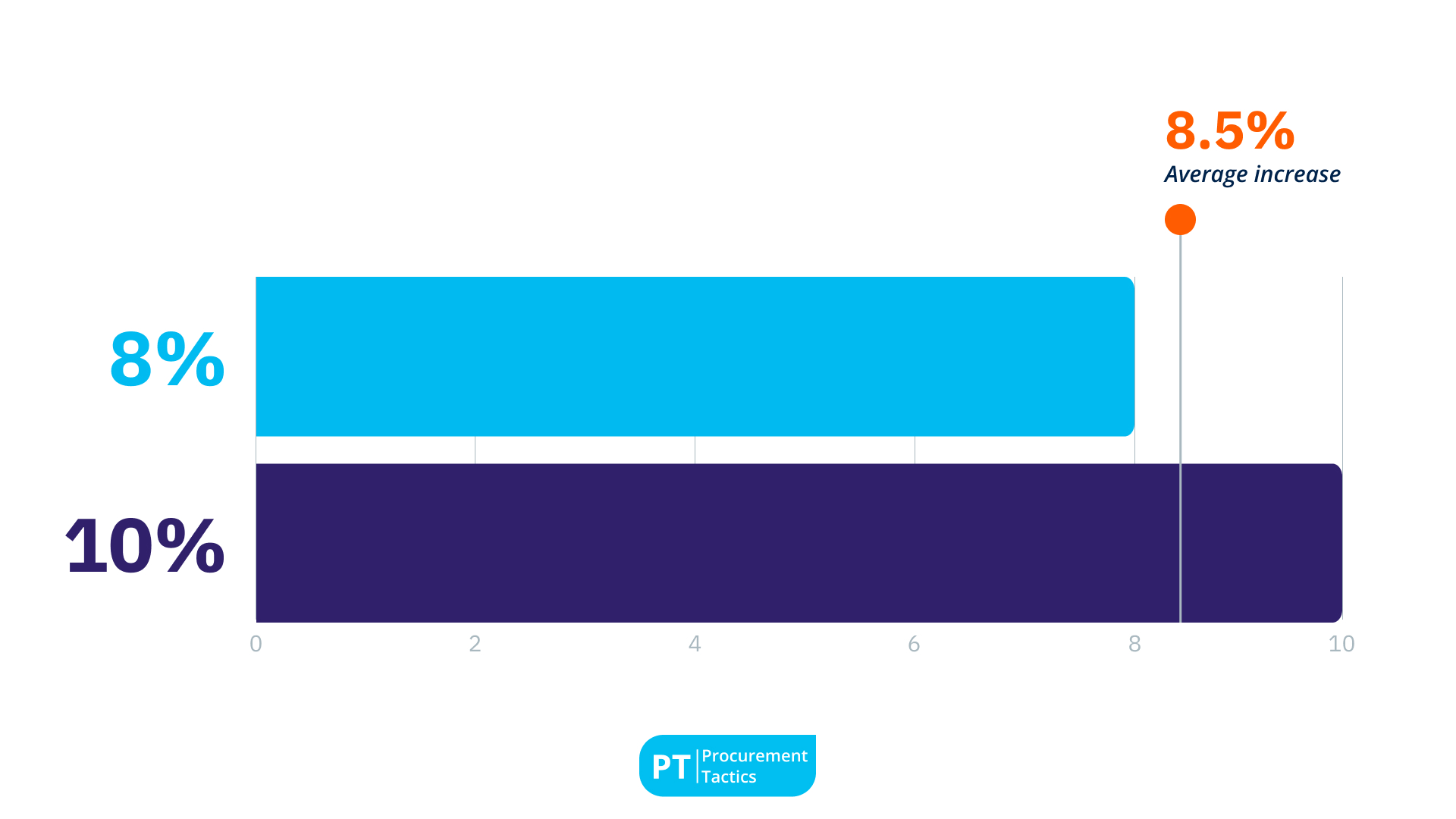
58. 71 % of UK Job Ads Disclose Salary Ranges
That makes Britain the most transparent large European market.
Germany is at just 16 %, and the extra visibility helps candidates anchor expectations while pressuring employers to calibrate offers more precisely.
59. 25 % of Firms Use AI for Pay Benchmarking
Korn Ferry’s 2025 pulse survey shows HR teams racing to price scarce skills with data-driven accuracy.
Tools such as Payscale’s Verse cut analysis time and sharpen competitiveness.
60. 40 %+ of US Employers to Raise Starting Salaries for 2025 Graduates
The latest NACE Job Outlook survey suggests that, even as overall wage growth cools, early-career talent still holds strong bargaining power in a tight graduate market.
Conclusion
To succeed in today’s job market, it’s important to understand the changing landscape of employment and recruitment.
This includes being aware of salary negotiation dynamics, adapting to new remote and hybrid work models, and positioning oneself strategically in the competitive job market, even with the rise of AI.
As businesses continue to seek a global workforce, individuals who know industry trends, effective negotiation skills, and an understanding of the evolving job market dynamics will be better equipped for success in their careers.
Frequentlyasked questions
What are salary negotiation statistics?
Salary negotiation statistics show you the situation of employees in a particular year when they are negotiating their salaries.
How to negotiate salary?
To negotiate your salary, you must be prepared and confident.
What does hybrid work mean?
This is a kind of setup for employees to have more flexibility to get their work done anytime and anywhere they are most productive.
About the author
My name is Marijn Overvest, I’m the founder of Procurement Tactics. I have a deep passion for procurement, and I’ve upskilled over 200 procurement teams from all over the world. When I’m not working, I love running and cycling.

